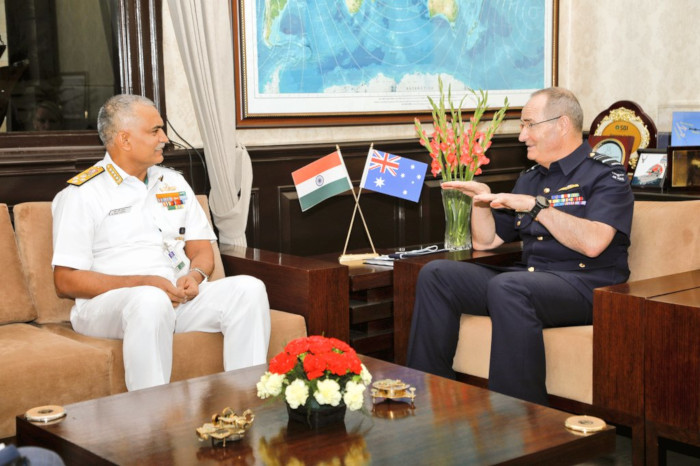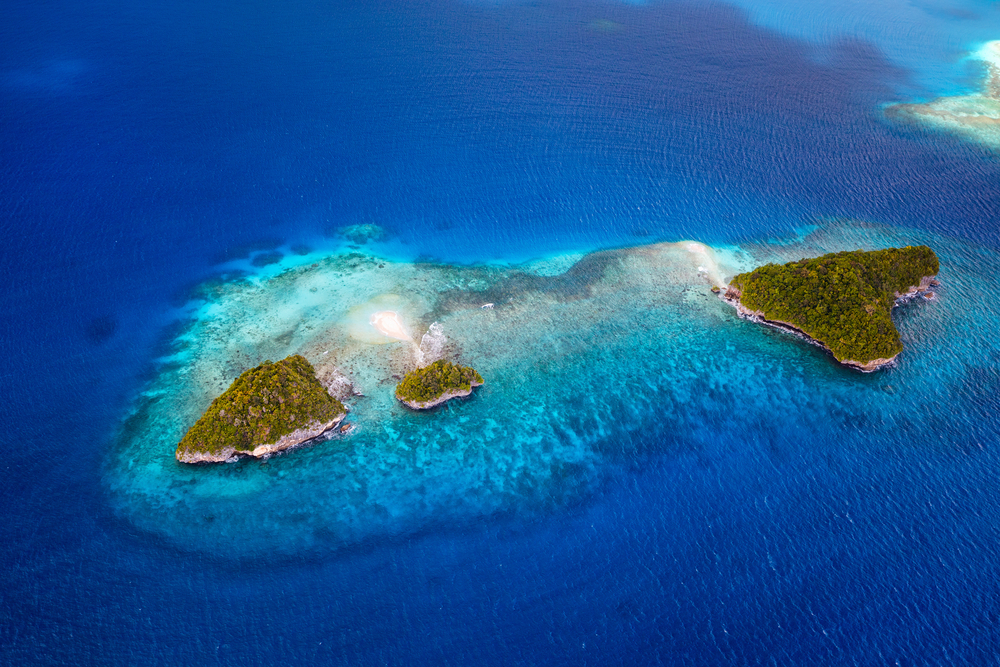
India-Australia Defence Cooperation and Collaboration in the Indo-Pacific
by Dr Shubhamitra Das
The significant rise in defence and security ties between India and Australia has led to an ease in dealing with their responsibilities in multilateral regional forums. The institutionalisation of cooperation has also become more strategic. The geostrategic positioning of India and Australia on the Indian and Pacific Oceans has helped with the convergence of interests, enabling relations to expand and steadily deepen. Unlike in earlier times when New Delhi and Canberra were searching for equal grounds for cooperation, the concept of the Indo-Pacific has made this easier, enhancing the conviction that greater engagement was an inevitability of their geographic circumstances. It made them partners to jointly take responsibility for maintaining a free, open, inclusive and peaceful Indo-Pacific, which demands a noticeable tilt towards defence and security cooperation. India has long aspired to be the key protagonist in the Indian Ocean; Australia has wanted to more naturally belong to the region. Moreover, Australia’s foreign policy over the years has emphasised playing a constructive role in the region with enhanced regional engagement. Though China looms large in each nation’s strategic calculation, the issues that unite both countries go beyond China and include the multifaceted challenges of maritime security, piracy, armed robbery, smuggling of small arms, protracted internal conflict, illegal, unprotected, and unregulated (IUU) fishing, cyber security, climate change, and ocean-born trade security. The India-Australia Comprehensive Strategic Partnership (2020), upgraded from the bilateral strategic partnership of 2009, is an effort to broaden the scope of their defence and security relationship by finding new initiatives, methods, and mechanisms to sustain mutual security interests. These have been bolstered to-date through cooperation in the AUSINDEX, Kakadu, Pitch Black, Milan, and Malabar military exercises, and with further collaboration in the Indian Ocean Naval Symposium, 2+2 ministerial dialogues, Joint Working Group for research on enhancing defence industry, mutual logistics, and intelligence support and sharing agreements. These have included, for example, the Mutual Logistics Support Agreement and officer exchange programs. In addition, Australia’s invitation to India to join Exercise Talisman Sabre, the most important military exercise between Australia and the United States, will set another milestone for cooperation. Both countries further engage in humanitarian matters, energy security, and marine and space research. Their commitment to Humanitarian Assistance and Disaster Relief in Afghanistan and within the Quadrilateral Security Dialogue in vaccine distribution, for example, highly has been successful. In energy security, both have agreed to focus on UN Sustainable Development Goals and work on new and renewable technology in solar and wind energy. One potential area for cooperation – being maritime powers – will be wave energy for sustainable and resilient energy sources. The Indo-Pacific Oceans Initiative, in which India and Australia are deeply involved, will work on a whole array of issues involving marine ecology; security of maritime borders; pollutants, like marine plastics; IUU fishing; and marine research for conservation purposes. In addition, India and Australia have updated the Memorandum of Understanding in space programs, technology advancement, and joint space programs. Australia will also be supporting India in tracking the Gaganyaan mission – India’s first space-manned mission – at Cocos Keeling Island. Currently, India and Australia are at a crucial juncture. The election of the new government in Australia in 2022 is likely to aid the strong relationship between the two nations. But the turn for India to head the G20 is also expected to facilitate greater cooperation, particularly in economic and trade liberalisation and potential reform of economic regimes such as the World Trade Organization. In April 2022, India and Australia signed their first Free Trade Agreement (FTA), the India-Australia Economic Cooperation and Trade Agreement. The fast pace at which their trade took off – from US$13.6 billion in 2007 to US$24.3 billion in 2020 – shows the many benefits of diversifying their trade. In addition, the elimination of tariffs for nearly 90 percent of Indian exports will further boost the Indian economy. The question is whether India will continue to engage its economy regionally in multilateral economic bodies. While it declined to join the Regional Comprehensive Economic Partnership, India has begun a process of seeking bilateral FTAs with most member countries. What Australia and India can achieve bilaterally to make the comprehensive strategic partnership effective is to engage in dialogue with regional littoral countries on defence and security. This engagement will help with confidence-building and familiarity among partners. However, the advantage of this type of institutionalisation of the Indo-Pacific depends upon the degree to which states seek interaction. The littoral states, in this sense, should be included within the Indo-Pacific complex as much as possible. The emerging paradigm of inclusivity and pluralism within a free, open, and peaceful Indo-Pacific will bring together the littoral and less powerful countries of the region and empower them to join and engage with others; that is, those who otherwise do not have a voice or clout in international political platforms. Along these lines, the Indian Security and Growth for all (SAGAR) initiative seeks to enhance cooperation through information sharing, capacity building, coastline surveillance, and infrastructure building. The India-Australia-Indonesia trilateral dialogue is another attempt to enhance cooperation in the same direction. Although it was presumed in India that the Labor government in Australia might be more inclined toward China, it was understood that this did not mean a policy and behavioral turnaround. Instead, Canberra’s focus will include a mix of continuity and change. Australia has come a long way in its institutionalisation of the Indo-Pacific, and its ability to diversify its interests by engaging with the littoral countries deserves special attention. To be sure, China’s increased aggression in the South China Sea and it’s diplomatic handling of Australia’s COVID-19 inquiry have been influential here. But the process has also been captive to such institutionalisation as mentioned above. Australia’s involvement with Quad and its participation in the military exercises with India and other Quad countries in the Indian Ocean will continue to strain its relations with China. In addition, the Russia-Ukraine war will likely continue to drive foreign policy activism and cooperation among like-minded countries, of which Australia figures prominently. The takeaway here is that regular interaction between the two countries on various defence-related activities has worked to enhance mutual respect and understanding of shared values. This interaction has broader implications. Both nations can support each other in addressing issues of mutual concern internationally. Their engagement in trilateral groupings like the India-Australia-Indonesia and India-Japan-Australia dialogues, as well as joint engagement in the Supply Chains Resilience Initiative and the Quad with the United States and Japan, represent successful examples of bilateral and multilateral trust and relationship-building. One significant outcome of these growing partnerships will be to revive and strengthen the Indian Ocean Rim Association in awareness generation, capacity-building, and consensus-building. Lastly, all the above initiatives are government efforts to enhance partnerships. The involvement and regular interaction of academia, think tanks, civil society, and the media have been equally important and will continue to play an important role in boosting these relationships.









